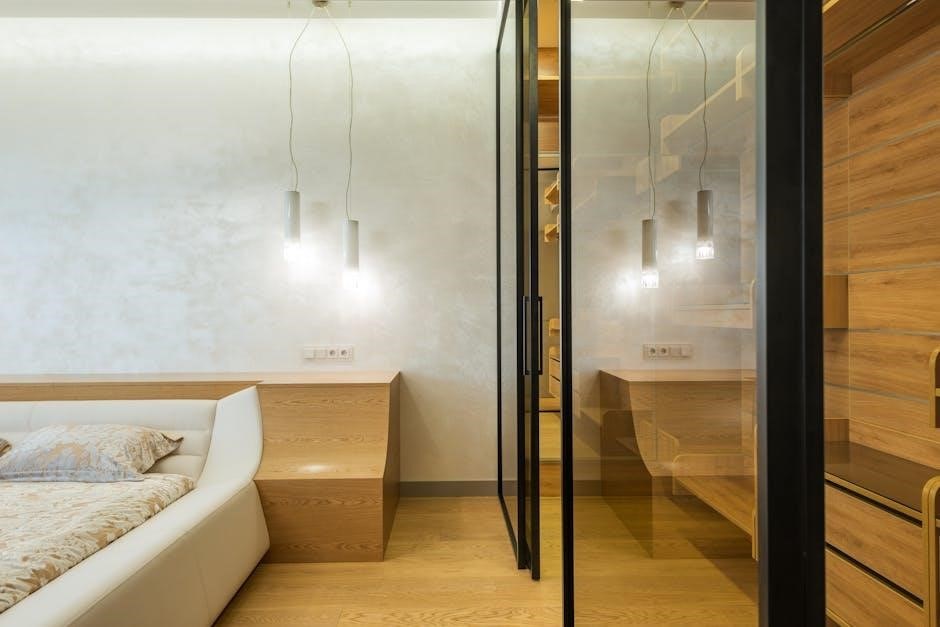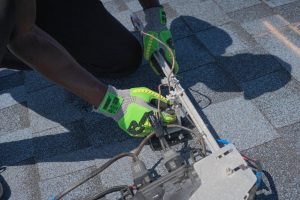Wooden bunk bed assembly is a rewarding yet complex task requiring patience and attention to detail. Proper assembly ensures safety and durability, making it essential to follow instructions carefully. Basic tools and a clear workspace are necessary for a smooth process. Understanding each step helps create a sturdy and functional bed for years to come.
1.1 Importance of Proper Assembly
Proper assembly of a wooden bunk bed is crucial for safety and structural integrity. A poorly assembled bed can lead to instability, posing risks of accidents, especially for children. Ensuring all parts are securely fastened prevents wobbling and ensures the bed can support the recommended weight capacity. Correct assembly also extends the lifespan of the bed, protecting the wood from unnecessary strain. Always follow the manufacturer’s guidelines to guarantee a sturdy and reliable structure. Regular checks after assembly help maintain safety and durability over time.
1.2 Benefits of Building a Wooden Bunk Bed
Building a wooden bunk bed offers numerous benefits, including space-saving design and cost-effectiveness. It provides a comfortable sleeping solution for multiple users, ideal for small rooms or shared spaces. Customization options allow you to match the bed’s style with your home decor. Additionally, constructing it yourself enhances DIY skills and gives a sense of accomplishment. Durable wood materials ensure long-lasting quality, making it a worthwhile investment for families. Plus, it promotes sustainability by using natural, eco-friendly resources.
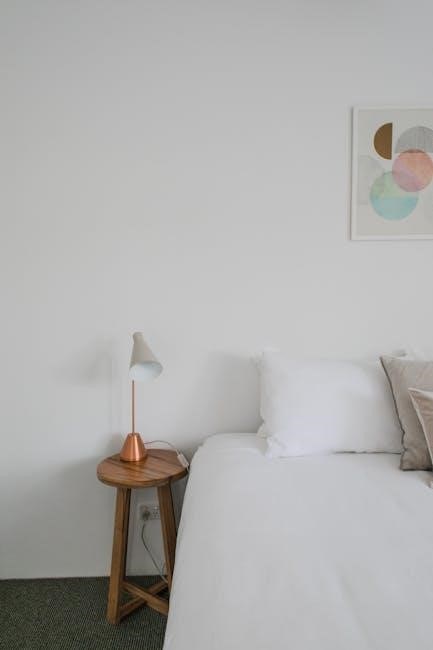
Preparation for Assembly
Preparation is key for a smooth assembly process. Gather all tools and materials beforehand, ensuring nothing is missing. Unpack and organize parts carefully to avoid damage. Read the manual thoroughly to understand each step, and prepare a clean, flat workspace for efficiency.
2.1 Gathering Tools and Materials
Gathering tools and materials is the first step in bunk bed assembly. Ensure you have a screwdriver, Allen wrench, and lag bolts. Check for all parts listed in the manual. Lay out components on a clean, flat surface to avoid misplacement. Protect the floor with a rug or carpet during assembly. Verify that all fittings and hardware are included to prevent delays. Having everything ready ensures a smooth and efficient assembly process. Double-check the checklist to confirm nothing is missing before starting.
2.2 Unpacking and Organizing Parts
Unpacking and organizing parts is crucial for efficient assembly. Carefully remove all components from the boxes to avoid damage. Sort and identify each part using the checklist in the instruction manual. Separate hardware like screws, bolts, and brackets into labeled containers. Keep small parts away from children to prevent loss or accidents. Do not discard packaging materials until all items are accounted for. Organize larger pieces, such as bed frames and slats, in a clean, flat area. This step ensures everything is ready for assembly and minimizes delays. Proper organization is key to a smooth process.
2.3 Understanding the Instruction Manual
The instruction manual is your guide to successful assembly. Take time to read it thoroughly before starting. Familiarize yourself with diagrams and written descriptions for each step. Checklists and part identifiers help ensure no components are missed. Pay attention to safety notes and tool requirements. Visual aids clarify complex steps, while written instructions provide detailed guidance. Understanding the manual prevents mistakes and saves time. If unsure, refer back to the manual to avoid errors. A clear understanding of the instructions is essential for assembling a safe and sturdy bunk bed. Proper preparation leads to a successful outcome. Always follow the manual’s advice for the best results.

Safety Guidelines
Safety guidelines are crucial to ensure a secure and stable bunk bed. Always follow instructions to prevent accidents and ensure the bed’s durability for years of safe use.
3.1 General Safety Precautions
Safety guidelines are essential to avoid accidents during assembly. Always read the instructions carefully and ensure all parts are accounted for before starting. Keep small components out of children’s reach. The upper bunk is not recommended for children under 6 years old, and the lower bunk is not suitable for children under 3 years old. Ensure the workspace is stable and clear to prevent tripping hazards. Use protective coverings like rugs or carpets to avoid damaging the floor or components. Always assemble on a flat, even surface to maintain balance. If unsure, consider having another person assist for added safety.
3.2 Age Recommendations for Use
For safety, the upper bunk is not recommended for children under 6 years old, while the lower bunk is not suitable for children under 3 years old. These guidelines ensure the child’s physical and cognitive development aligns with the bed’s design. Always supervise children using the upper bunk to prevent accidents. Adhering to these age recommendations helps guarantee a safe and enjoyable experience for your child. Proper adherence to these guidelines is crucial for maintaining the structural integrity and safety of the bunk bed.
3.4 Securing the Bed for Stability
To ensure the bed’s stability, use lag bolts and brackets to firmly attach the upper bunk to the lower frame. Always check the floor for levelness and consider using anti-slip pads or brackets to prevent movement. Tighten all screws and bolts after assembly to maintain structural integrity. For added safety, ensure the bed is placed on a flat, stable surface. Regularly inspect and re-tighten connections to prevent loosening over time. These steps ensure the bed remains sturdy and safe for use, especially for children. Stability is key to preventing accidents and ensuring long-term durability.

Step-by-Step Assembly Process
The step-by-step assembly process ensures a stable and safe structure. Follow the guide, use the right tools, and proceed methodically. Attention to detail is crucial. With proper guidance, the process is straightforward, resulting in a sturdy bed for years of reliable use.
4.1 Assembling the Lower Bunk
Begin by assembling the lower bunk, which forms the foundation of the bed. Attach the side rails to the headboard and footboard using the provided brackets and lag bolts. Ensure all connections are secure. Place the mattress slats on top of the side rails, spacing them evenly for optimal support. Tighten all screws firmly to avoid any movement. Double-check the stability before proceeding to the upper bunk. Proper assembly of the lower bunk is critical for the overall safety and stability of the structure.
4.2 Attaching Side Rails to the Headboard
To attach the side rails to the headboard, align the pre-installed brackets on the headboard with the corresponding holes on the side rails. Use the provided lag bolts to secure them tightly. Ensure the rails are evenly spaced and properly aligned for stability. Tighten the bolts firmly, but avoid overtightening to prevent damage to the wood. Double-check the alignment and connections to ensure they are secure. This step is crucial for maintaining the structural integrity of the bed and ensuring safety for the users.
4.3 Connecting Side Rails to the Footboard
Align the side rails with the footboard, ensuring the pre-drilled holes match up. Use the provided bolts to secure the rails to the footboard. Tighten the bolts firmly, but avoid overtightening to prevent damage to the wood. Double-check the alignment to ensure the rails are straight and evenly spaced. This step ensures the bed’s stability and proper weight distribution. Make sure all connections are tight and the structure feels sturdy before proceeding to the next step.
4.4 Installing Support Slats
Place the support slats evenly across the side rails, ensuring they fit snugly into the pre-designed slots. Secure each slat with the provided screws, tightening firmly to create a solid base for the mattress. Use a level to confirm the slats are properly aligned and the surface is even. Gently tap slats into place with a rubber mallet if needed. Double-check that all slats are tightly fastened to prevent movement or sagging. This step is critical for ensuring the bed’s structural integrity and providing adequate support for the mattress and occupants.
4.5 Securing the Upper Bunk
Position the upper bunk frame onto the lower bunk, aligning the pre-drilled holes with the supporting brackets. Use the provided bolts to secure the frame tightly, ensuring no movement. Tighten all connections firmly to maintain stability. Double-check the alignment to ensure the upper bunk is level and evenly balanced. Use a rubber mallet to gently tap the frame into place if necessary. Make sure all bolts are fully tightened to prevent any wobbling or instability. This step is crucial for ensuring the upper bunk remains safe and secure for use.
4.6 Attaching Guardrails
Remove the guardrails from their packaging and identify the corresponding brackets on the upper bunk. Align the guardrail with the pre-drilled holes on the side rails, ensuring proper fitment. Secure the guardrails using the provided bolts, tightening them firmly to prevent any movement. Double-check the tightness to ensure stability and safety. Repeat the process for the opposite side, maintaining symmetry. Make sure the guardrails are level and evenly spaced for optimal protection. This step is critical for preventing accidents and ensuring the upper bunk meets safety standards. Always refer to the manual for specific bolt locations and torque requirements.
4.7 Finalizing the Frame Assembly
Once all components are securely attached, inspect the entire frame for alignment and stability. Tighten all bolts and screws to ensure a sturdy structure. Verify that the upper and lower bunks are evenly spaced and properly supported. Check that all slats are firmly secured to the side rails and that the mattress bases are level. Ensure all connections are tight and no gaps exist between joints. Finally, double-check that all safety features, such as guardrails, are correctly installed and secure. This step ensures the bunk bed is safe, stable, and ready for use.

Additional Features and Customization
Add functionality and personal style with ladders, storage drawers, or custom finishes. Paint or stain the wood for a unique look, or add shelves for extra storage. Enhance comfort and safety with optional guardrail extensions or bedding accessories.
5.1 Adding a Ladder
Adding a ladder to your wooden bunk bed enhances accessibility and safety. Ensure the ladder is sturdy and securely attached to the frame. Most models come with pre-drilled holes for easy installation. Position the ladder at a slight angle for better grip, and use provided hardware to fasten it tightly. Consider adding non-slip steps or padding for extra safety, especially if the bed is for children. Test the ladder’s stability by applying moderate weight before final use. This step ensures a reliable and secure access point to the upper bunk.
5.2 Incorporating Storage Drawers
Incorporating storage drawers into your wooden bunk bed adds functionality and convenience. Drawers can be installed beneath the lower bunk, providing ample space for clothing or bedding. Ensure the drawers are aligned with the bed frame for a seamless look. Use the hardware provided in the kit to secure them firmly. Test the drawers by pulling them in and out to ensure smooth operation. This feature not only enhances organization but also keeps the room tidy. Labeling the drawers can help with easy access and maintenance, making it a practical addition to the bunk bed setup.
5.3 Customizing with Paint or Stain
Customizing your wooden bunk bed with paint or stain is a great way to personalize its appearance. Sand the wood to ensure a smooth finish before applying your chosen color or stain. Use high-quality brushes to avoid streaks and evenly coat the surface. Allow the paint or stain to dry completely between coats for a professional look. Seal the finish with a clear varnish to protect the wood and maintain the color. This step allows you to match the bed to your room’s decor, making it a unique and stylish addition to your space. Always follow safety guidelines when working with paint or stain, such as working in a well-ventilated area.
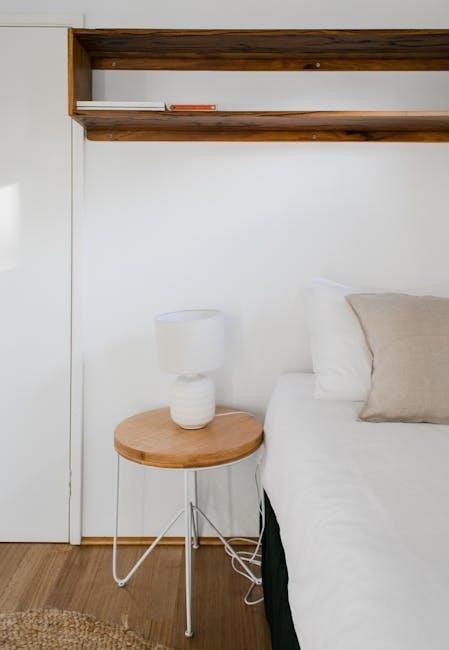
Final Checks and Testing
After assembly, inspect the bunk bed for stability and ensure all parts are securely fastened. Test the weight capacity by gently applying pressure. Verify that guardrails and ladders are firmly attached. Check for any wobbling or loose joints. Ensure the mattress fits properly and the structure is level. Conduct a final walkthrough to confirm everything is safe and functional before allowing use.
6.1 Inspecting for Stability
Inspecting the bunk bed for stability is crucial for safety and durability. Check that the frame is balanced and all bolts are tightly secured. Ensure the bed stands evenly on the floor by verifying that all legs are firmly in contact. Gently rock the bed to detect any wobbling or instability. Pay special attention to connections between the upper and lower bunks. Ensure guardrails are secure and the ladder is firmly attached. If any part feels loose, tighten it immediately. Also, check for even weight distribution to prevent tipping. Stability ensures the bed remains safe for daily use.
6.2 Testing Weight Capacity
Testing the weight capacity ensures the bunk bed can safely support the intended load. Start by gradually adding weight to the bed, checking for any signs of strain or bowing. Use the manufacturer’s guidelines to determine the maximum weight limit. Apply weight evenly across the mattress surface to simulate real-world use. If the bed sags excessively or creaks, it may indicate a structural issue. Repeat the test after making any adjustments to ensure stability. Always adhere to the recommended weight limits to prevent damage or safety hazards. This step ensures the bed remains durable and secure for years.
6.3 Ensuring All Parts Are Secure
After assembling the bunk bed, it’s crucial to verify that all components are tightly secured. Check every bolt, screw, and joint to ensure they are properly tightened. Inspect the guardrails, support slats, and ladder connections for stability. Double-check the frame to ensure no parts are loose or misaligned. Gently shake the bed to test for wobbling or instability. If any part feels unstable, re-tighten the connections and retest. Ensuring all parts are secure guarantees the bed’s durability and safety, especially for children. This final check prevents potential hazards and ensures long-term reliability.
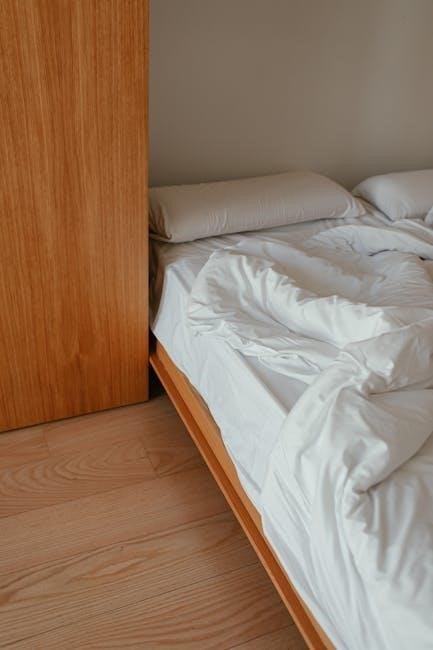
Maintenance and Upkeep
Regularly clean the bunk bed to prevent dust buildup. Inspect and tighten loose screws to maintain stability. Protect the wood finish with polish or wax to preserve its appearance and durability.
7.1 Regular Cleaning
Regular cleaning is essential to maintain the appearance and durability of your wooden bunk bed. Dust surfaces weekly with a soft, dry cloth to prevent dust buildup. For tougher stains, use a damp cloth with mild soap, but avoid harsh chemicals that could damage the wood finish. Vacuum mattresses and crevices to remove dirt and allergens. Inspect for spills or moisture and clean them immediately to prevent warping or mold. Optional: Use wood polish periodically to maintain the shine and protect the wood. Cleaning ensures a hygienic and long-lasting structure for your family.
7.2 Tightening Loose Parts
Regularly inspect and tighten any loose screws, bolts, or joints to ensure the bunk bed remains stable and secure. Check connections between side rails, slats, and frame. Use the appropriate tools (e.g., Allen wrench or screwdriver) to tighten parts firmly but avoid overtightening, which may damage the wood. Inspect after moving the bed or if it’s used frequently. Address squeaks by tightening joints or applying wood-friendly lubricants. Consistent checks prevent structural issues and ensure long-term safety and durability for users of all ages.
7.3 Protecting the Wood Finish
To maintain the appearance and durability of your wooden bunk bed, regularly protect the wood finish. Use a high-quality furniture wax or wood polish to enhance the grain and color. Avoid placing the bed near direct sunlight, as it may cause fading. Clean spills immediately with a soft, damp cloth to prevent stains. For tougher marks, use a mild wood cleaner, but avoid harsh chemicals that could damage the finish. Applying a wood oil periodically can also moisturize and protect the surface. Regular maintenance ensures the bunk bed remains a beautiful and sturdy piece of furniture for years.

Troubleshooting Common Issues
Common issues like wobbly frames or squeaky joints can arise. Always check connections and tighten loose parts. For scratches or dents, use wood touch-up solutions to restore the finish.
8.1 Dealing with Wobbly Frames
A wobbly frame can compromise safety and stability. Inspect all connections for tightness, ensuring bolts and screws are properly secured. If instability persists, check for missing or loose hardware. Tighten any loose parts using a wrench or screwdriver. For added stability, install anti-slip pads under the bed legs. If the issue remains, consider reinforcing joints with additional brackets or supports. Regular checks can prevent future wobbling and ensure the bed remains sturdy for years to come.
8.2 Fixing Squeaky Joints
Squeaky joints can be resolved with simple adjustments. Identify the source of the noise by gently rocking the bed. Tighten any loose bolts or screws using an Allen wrench or screwdriver. Apply wood glue to joints and clamp them until dry for added stability. For persistent squeaks, silicone-based lubricant can be applied to moving parts. Regularly inspect and tighten connections to prevent future squeaks. Ensuring smooth, quiet operation enhances comfort and longevity of the bunk bed.
8.3 Addressing Scratches or Dents
Scratches or dents on the wooden bunk bed can be repaired to restore its appearance. For minor scratches, light sanding followed by a touch-up with matching wood stain or paint works well. Deeper scratches may require filling with wood filler, sanding smooth, and refinishing. Dents can be steamed using a damp cloth and heat to raise the wood grain. After repairs, apply a protective finish to maintain the wood’s integrity. Regular inspections and prompt repairs prevent further damage, ensuring the bed remains visually appealing and structurally sound for years to come.

Customer Reviews and Feedback
Customers praise the durability and aesthetic appeal of wooden bunk beds, though some note challenges with assembly complexity. Feedback highlights the importance of clear instructions and quality materials.
9.1 Positive Experiences
Many customers have shared positive experiences with wooden bunk bed assembly, praising the durability and aesthetic appeal of the final product. Clear instructions and minimal tools make the process manageable, even for those with limited DIY experience. The sturdy structure and solid wood material have been highlighted as key features, ensuring safety and longevity. Users often express satisfaction with the end result, noting how the bed enhances their home decor while providing functional space-saving solutions. The sense of accomplishment after successful assembly is a common theme in customer feedback.
9.2 Common Challenges Reported
Some users have reported challenges during wooden bunk bed assembly, primarily due to unclear or overly complex instructions. Misaligned parts and missing hardware have been common issues, leading to frustration. Additionally, the weight and size of the components can make handling difficult, especially for inexperienced assemblers. Time constraints are another concern, as assembly often takes longer than expected. Despite these hurdles, most users agree that the end result is worth the effort, providing a sturdy and attractive sleeping solution for years to come.
9.3 Suggestions for Improvement
Customers suggest improving assembly instructions by adding more detailed diagrams and video guides. Clearer labeling of parts and including a comprehensive tool list would enhance the experience. Offering pre-drilled holes or color-coded components could reduce confusion. Better organization of instructions and including a troubleshooting section would also be beneficial. Providing customer support for assembly-related queries would address common challenges effectively. These improvements would make the process more user-friendly and ensure a smoother assembly experience for all skill levels.

Frequently Asked Questions
Common questions include tool requirements, assembly time, and disassembly options. Weight capacity and age guidelines are also frequently queried for safety and structural integrity.
10.1 What Tools Are Needed?
Assembling a wooden bunk bed typically requires basic tools like an Allen wrench, screwdriver, and hammer. A tape measure and clamps can also be helpful. Ensure all tools are readily available to streamline the process. Optional tools like a drill may be needed for custom adjustments. Always refer to the instruction manual for specific tool requirements, as some models may vary. Having a clean, flat workspace and unpacking all parts beforehand will also aid in efficiency. Keep small parts away from children to avoid accidents during assembly.
10.2 How Long Does Assembly Typically Take?
The assembly time for a wooden bunk bed varies based on complexity and skill level. Most models take 2-4 hours for two people working together; Simple designs with fewer parts may be quicker, while larger or customizable beds can require up to 6 hours. Having all tools ready and following instructions carefully can significantly speed up the process. Novice assemblers should allocate extra time to ensure everything is done correctly. Pre-unpacking and organizing parts beforehand can also save time. Plan accordingly to complete the assembly efficiently and safely.
10.3 Can the Bed Be Disassembled?
Yes, wooden bunk beds can typically be disassembled, but the process can be complex. Disassembly often requires reversing the assembly steps, which may be time-consuming. Bolts and screws need to be carefully removed to avoid damaging the wood. Some models are designed for easy disassembly, while others are more permanent. Consult the instruction manual for specific guidance, as methods can vary. Disassembling the bed is usually done for moving or storage, but it’s important to ensure all parts are securely reassembled to maintain stability and safety. Always follow the manufacturer’s instructions for best results.
